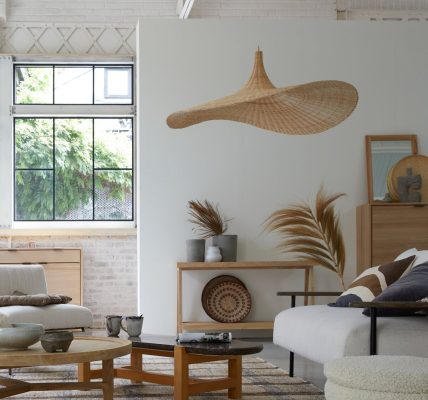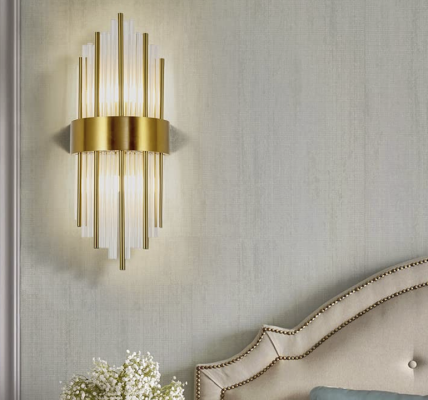Proper lighting in bathrooms is crucial for functionality, safety, and aesthetics. Bathrooms are spaces where individuals perform daily grooming tasks such as applying makeup and shaving, which require adequate illumination. Insufficient lighting can make these activities challenging and potentially hazardous Mingobox.
Well-designed lighting can also create a relaxing atmosphere, enhancing the overall bathroom experience. Safety is a significant consideration in bathroom lighting design. Proper illumination helps prevent accidents in wet areas like showers and bathtubs by improving visibility.
Additionally, good lighting can contribute to maintaining a dry environment, which may help inhibit mold and mildew growth. Aesthetically, appropriate lighting can elevate the bathroom’s design, making it more visually appealing and enjoyable. It can highlight architectural features, create ambiance, and complement other design elements in the space.
In summary, effective bathroom lighting is essential for supporting daily routines, ensuring safety, and enhancing the overall design and comfort of the space. It is a critical component of bathroom design that impacts both functionality and user experience.
Choosing the Right Style of Wall Lamps
Design and Style Considerations
The overall design and style of the bathroom play a significant role in determining the perfect wall lamps. The chosen fixtures should harmonize with the existing decor and elevate the overall aesthetic of the space.
Modern vs. Traditional Bathroom Styles
For a modern bathroom, sleek and minimalist wall lamps with clean lines and metallic finishes are often a great choice. In contrast, ornate wall lamps with intricate details and warm finishes such as brass or bronze may be more suitable for traditional or vintage-inspired bathrooms.
Size and Scale of Fixtures
Another crucial factor to consider is the size and scale of the wall lamps. The fixtures should be proportionate to the size of the bathroom and the wall where they will be installed. It’s essential to carefully measure the available wall space and consider the height and width of the wall lamps to ensure they are a good fit for the room.
Placement and Installation Tips for Wall Lamps
Proper placement and installation of wall lamps in the bathroom are crucial for achieving optimal lighting and functionality. When determining the placement of wall lamps, it’s important to consider the specific areas of the bathroom that require lighting. For example, wall lamps placed on either side of the vanity mirror can provide even and shadow-free illumination for grooming tasks such as applying makeup or shaving.
Placing wall lamps near the shower or bathtub can also provide adequate lighting for these areas, enhancing safety and visibility. In terms of installation, it’s important to hire a professional electrician to ensure that the wall lamps are safely and securely installed. The electrician can also help determine the best placement for the wall lamps based on the existing wiring and electrical layout of the bathroom.
Additionally, it’s important to consider the height at which the wall lamps are installed. Ideally, they should be positioned at eye level to provide the most flattering and functional lighting for tasks such as applying makeup or styling hair.
Incorporating Dimmers for Mood Lighting
Incorporating dimmers for wall lamps in the bathroom can provide versatility and flexibility in terms of lighting options. Dimmers allow you to adjust the brightness of the wall lamps according to your needs and preferences, making it easy to create different moods and atmospheres in the space. For example, bright task lighting may be needed for grooming activities during the day, while softer ambient lighting may be more suitable for a relaxing bath in the evening.
Dimmers allow you to easily transition between these different lighting scenarios, enhancing the functionality and comfort of the bathroom. In addition to creating different moods, dimmers can also help save energy and extend the lifespan of light bulbs. By dimming the wall lamps when full brightness is not necessary, you can reduce energy consumption and lower your electricity bills.
Dimming the lights can also help prolong the life of the light bulbs, as they will not be operating at full power all the time. Overall, incorporating dimmers for wall lamps in the bathroom can provide both practical and aesthetic benefits, making it a valuable addition to your lighting design.
Using Wall Lamps to Highlight Specific Areas
Wall lamps can be used to highlight specific areas in the bathroom, adding both functionality and visual interest to the space. For example, wall lamps placed above or beside a piece of artwork or a decorative feature can draw attention to these elements and create a focal point in the room. Similarly, wall lamps can be used to highlight architectural details such as a textured wall or a decorative tile backsplash, adding depth and dimension to the overall design of the bathroom.
In addition to highlighting specific areas, wall lamps can also be used to create visual balance in the bathroom. Placing wall lamps on either side of a large mirror or a vanity can help create symmetry and even illumination for grooming tasks. This not only enhances functionality but also contributes to a cohesive and harmonious design.
By strategically using wall lamps to highlight specific areas and create visual balance, you can elevate the overall aesthetics of your bathroom while enhancing its functionality.
Adding Decorative Elements with Wall Lamps
Endless Design Options
From sleek and modern to ornate and traditional, wall lamps come in a wide range of styles to suit your unique preferences. Whether you’re drawn to minimalist sconces with clean lines or vintage-inspired fixtures with intricate details, wall lamps can be used to enhance the visual appeal of your bathroom.
Creating a Cohesive Look
In addition to their aesthetic appeal, wall lamps can also contribute to a cohesive design scheme in the bathroom. By coordinating the style and finish of the wall lamps with other elements such as faucets, cabinet hardware, and towel bars, you can create a polished and harmonious look that ties the entire space together.
Adding Ambiance and Warmth
Wall lamps can also add warmth and ambiance to the bathroom, creating a welcoming and inviting atmosphere that enhances your overall experience in the space. By incorporating wall lamps into your bathroom design, you can create a relaxing and rejuvenating environment that’s perfect for unwinding after a long day.
Maintenance and Care for Wall Lamps in the Bathroom
Proper maintenance and care for wall lamps in the bathroom are essential for ensuring their longevity and performance. Regular cleaning is important to remove dust, dirt, and grime that can accumulate on the fixtures over time. It’s important to use gentle cleaning solutions and soft cloths to avoid damaging the finish or any delicate parts of the wall lamps.
Additionally, it’s important to check for any signs of wear or damage such as loose wires or corroded components, as these issues should be addressed promptly by a professional electrician. Furthermore, it’s important to regularly inspect and replace light bulbs as needed to ensure that the wall lamps are providing adequate illumination. Using energy-efficient LED bulbs can help reduce energy consumption and minimize the frequency of bulb replacements.
It’s also important to periodically check for any signs of moisture or water damage around the wall lamps, as this can indicate potential electrical hazards that need to be addressed immediately. By staying proactive with maintenance and care for wall lamps in the bathroom, you can ensure that they continue to function safely and effectively while enhancing the overall design and functionality of your space.















